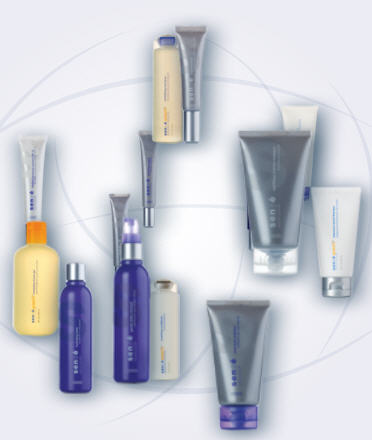7 Beauty Treatments to Avoid
 If you’re considering a little nip and tuck, you should also think about whether that nipping is really worth trucking away lots of paychecks to cover the costs. Some widely used treatments are not worth the hundreds or thousands of dollars they cost – not to mention the pain and risks. It’s not uncommon to find people offering treatments without the proper credentials, such as training or certification in dermatology or plastic surgery. Nurses and even laymen are earning licenses through brief courses, often online. Some states have no licensing requirements. And at physician-run “medispas”, a doctor doesn’t even need to be on site as long as he or she is a phone call away. So think twice about what procedure you’re getting, and consider who’s performing it. (To find board-certified plastic surgeons go to www.plasticsurgery.org, and for dermatologists go to ww.aad.org).
If you’re considering a little nip and tuck, you should also think about whether that nipping is really worth trucking away lots of paychecks to cover the costs. Some widely used treatments are not worth the hundreds or thousands of dollars they cost – not to mention the pain and risks. It’s not uncommon to find people offering treatments without the proper credentials, such as training or certification in dermatology or plastic surgery. Nurses and even laymen are earning licenses through brief courses, often online. Some states have no licensing requirements. And at physician-run “medispas”, a doctor doesn’t even need to be on site as long as he or she is a phone call away. So think twice about what procedure you’re getting, and consider who’s performing it. (To find board-certified plastic surgeons go to www.plasticsurgery.org, and for dermatologists go to ww.aad.org).
Laser treatments for large spider veins in the legs
Laser removal of weblike purple and red spider veins is limited dot very find surface veins. For very noticeable veins, especially if your legs look more like a road map, don’t’ waste your money. A central “feeder” vein from which smaller spider veins radiate must be treated to fix the problem, and that can’t be done externally by laser. Also, see a vein specialist to rule out varicose veins.
A Better Bet Sclerotherapy. A doctor injects veins with a solution that causes them to fade. Blood flows through an alternate healthy vein, so circulation is not affected. You can resume normal activity right away. Multiple visits might be necessary, depending on severity. The cost is $400 per treatment.
Unapproved hair-loss potions and procedures
Only FDA-approved therapies have been proven to work. Of the surgical procedures that do help, some, such as scalp reduction and scalp flaps, don’t’ offer as natural-looking results as new options, which are less invasive.
A Better Bet FDA-OK’d therapies. Minoxidil (Rogaine) has been proven to help regrow women’s hair in many cases. A promising but not-yet-approved drug is bimatoprost, which has been OK’d for treating glaucoma and is in the eyelash-lengthening drug Latisse. To find a qualified doctor, check out the International Society of Hair Restoration Surgery at www.ishrs.org.
Mesotheraphy, lipo, endermologie, and lasers for cellulite
Endermologie might temporarily improve the appearance of cellulite, but it requires 14 sessions at $150 to $300 a pop. And mesotherapy injections are such a sham that the Physicians Coalition for Injectable Safety strongly warns consumers against them. At this point there is no mechanical, surgical, laser, light, liposuction, or topical product that has been proved to remove cellulite.
A Better Bet Creams and exercise. Creams with methlxanthines (such as caffeine) are a low-cost way to get temporary relief. Or try exercise. In one study, subjects who did 20 minutes of cardio and 20 minutes of strength training three times a week saw less cellulite after only eight weeks.
Microdermabrasion for smoother skin
This treatment is less invasive than dermabrasion (a controlled sanding of the skin), deep chemical peels (strong acid), or freezing (liquid nitrogen causes the skin to peel off). Those treatments can be too invasive. It takes weeks for the skin to heal and grow back, and recovery can be brutal. But all of these are very good in the right hands. The problem with microdermabrasion is that the results are too short-lived to justify the amount of money it costs.
A Better Bet Non-ablative laser resurfacing or intense pulsed light. These treatments can target small areas to treat a variety of pigmentation problems, dilated blood vessels, and other skin woes. They also stimulate collagen to tighten skin. Multiple sessions are often required. Laser treatments cost about $2,000; IPL, about $500.
Lipodissolve for fat reduction
Often billed as a nonsurgical alternative to liposuction, lipodissolve shots supposedly dissolve or melt away body fat. We found many unhappy patients’ complaints online. The American Society for Aesthetic Plastic Surgery has called the shots “scientifically unproven”. They are illegal in Brazil and Canada, and doctors using them in the U.K. can no longer get malpractice coverage. Lipodissolve is not FDA-approved.
A better Bet Liposuction. It has its own risks, but it’s a proven method for fat removal. Laser liposuction is less invasive. Many new noninvasive options are becoming available. We’ve seen good results from CoolSculpting by Zeltiq, which “chills fat cells and breaks them down, after which they are metabolized by the body over two to four months”. The cost ranges from $750 to $2,000.
Permanent lip implants
An implant can feel too firm, and complications include uncomfortable scar-tissue buildup. Also, once you have an implant you’re pretty much stuck with it. Actress Lisa Rinna had permanent silicone injected in her upper lip decades ago and has admitted that the silicone eventually hardened and she developed scar tissue that looked lumpy and unnatural.
A Better Bet Temporary injectable fillers. They plump the lips, and most require touch-ups every six months to a year. Experts like hyaluronic acid-based fillers such as Restylane, JUVÉDERM® XC, and Prevelle Silk for a soft, natural look. A do-it-yourself option: Line lips with a soft rose pencil along the very outer edge, then fill in with the pencil and top with gloss.
Varicose-vein stripping
“Stripping” involves making a series of surgical incisions and pulling out the varicose vein (swollen, bulging, knotted veins from bad vein valves or walls that often throb or burn) with a wire stripper. It requires general anesthesia in a hospital setting, and recovery involves three to six weeks of restricted activity. If a doctor recommends that costly procedure, get a second opinion, stat.
A Better Bet Endovenous laser ablation. It causes minimal pain and requires only local anesthesia, no incisions or hospitalization, and no downtime. Treatment involves inserting an optical fiber through the vein and delivering laser energy that causes the vein to eventually dissolve. It’s not cheap, $2,500 to $3,000, but it’s sometimes covered by insurance. To find a vein specialist, go to the American College of Phlebology website at www.acpsite.net.
Another really bad idea: BOTOX PARTIES
The American Society for Aesthetic Plastic Surgery has been raising red flags about Botox parties, as well as treatments done in salons, gyms, and even hotel rooms, of the by unqualified people. First, it should be done under sterile conditions to reduce the risk of infection. Bright lighting is also important so the physician can see what she is doing. Botox is not risk free, so don’t’ take chances. Bottom line Botox should be given in a medical facility where staffers take a medical history and are equipped to deal with emergencies. And Botox needles should not be shared!
Experts Recommend – USANA Skin Care Products – An Inspired Approach to Personalized Skin Care


